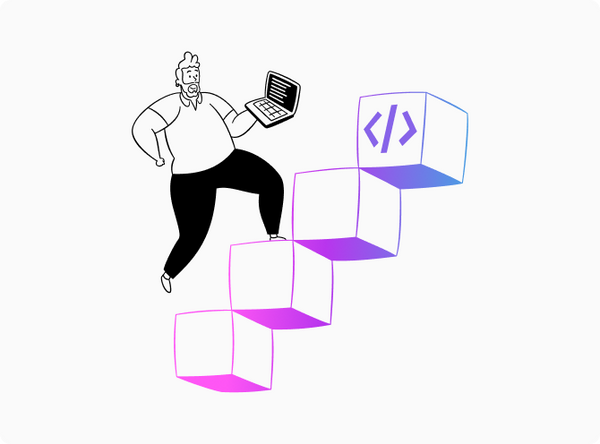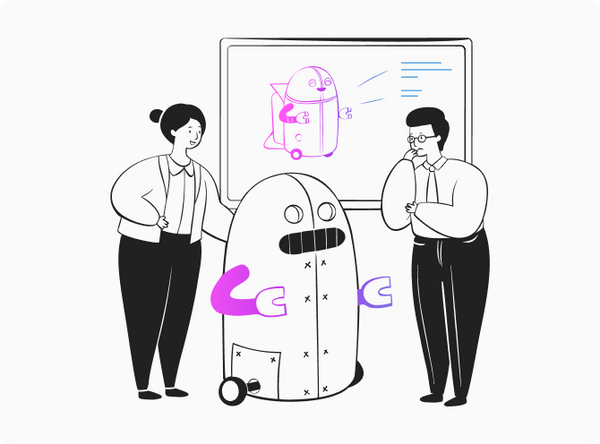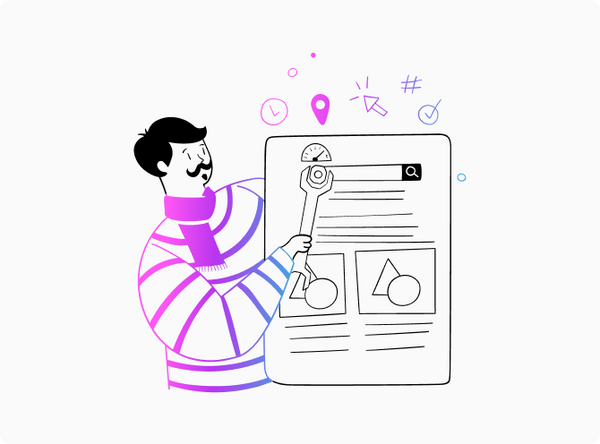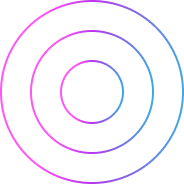
One of the first questions that we ask ourselves when we start working on a new project, is "How long will it take us to do this?". The product delivery timeline is an important element — document, list, or overview — in any project because it specifies how, when, in what order, and by what means the specific project will be handled from start to finish.
In this post, we'll take a look at the main phases of MVP development and their timelines. We’ll also go through a real-life MVP timeline for one of our projects to give you a better understanding of the 'timeline' subject itself.
Steps of MVP Development and Their Timeline
In order to correctly calculate the MVP development time it's vital to have an understanding of the main MVP development stages. So, let's go through the entire process step-by-step. Note also that the following overview is intended to demonstrate the general logic of the development workflow, which in practice will include additional steps (which will also be shown later in the article).

1. Market analysis
Before jumping into project development it is necessary to first assess the market you are going to build a product for. You need to study the needs of your target audience (TA) and figure out whether your solution is able to meet them. Try to understand what the preferences of your TA are and what obstacles they are currently facing.
Another side of the coin is the competition. Learn who your potential competitors are. Study their offerings to understand what makes them special or what features they lack. This will let you better shape your business concept and find that 'unique differentiator' that will help your product stand out even in a crowded niche.
Stage timeframe: approx. 5-7 days.
2. Business plan
The business model of your product defines not only how you will generate revenue from it, but also influences its functionality. So it's extremely important to have a solid business plan developed beforehand. The business plan normally includes the core goals of the project, industry analysis, customer analysis, monetization strategy, marketing plan, and financial forecast.
As to the monetization strategy, there are a lot of approaches you can choose from — depending on your goals, audience, and type of solution. As of today, the most popular monetization models are:
- Subscription-based — users are charged a recurring fee on a monthly, quarterly, or yearly basis for using a product or service.
- Freemium — users can get a demo version of the software for free, but if they want access to the product's advanced functionality, they are expected to pay a fee.
- In-app ads — the developers generate revenue from the third-party ads integrated into their software.
- Paid product — users simply pay a one-time fee to buy a product or service.
- In-app purchases — a product may be paid for or distributed for free while also allowing users to make purchases within a product (think of e-commerce platforms such as Etsy that offer to boost seller’s listings for a fee).
Stage timeframe: approx. 2-5 days.
3. Prototyping & UI/UX
Here the development team comes up with a product prototype. First, designers draw sketches of the primary screens of an app or website (depending on the kind of project). Once that's done, they turn sketches into wireframes — schematic illustrations of a product interface that specify all the content and its layout on-screen. After that, the wireframes get translated into the final designs, following the brand identity and other visual requirements established earlier.
At this stage, the developers may also create clickable prototypes to test UX and make any adjustments before front end development starts.
Stage timeframe: approx. 7-10 days.
4. Front end
Front end development is basically turning all the designs and visuals into a working product. Using such languages as HTML, CSS, and JavaScript front end developers put all the components together to come up with a website or an app.
Aside from the programming languages mentioned, it's also important for the developer to be well-versed in JSON, Node.js, MySQL, and React. So make sure to source a developer with the relevant expertise for your project.
Stage timeframe: approx. 5-7 days.
5. Testing
The main goal of this stage is to validate the product's performance and functionality and make sure that it provides smooth UX to the users. There are several tests that developers perform at this point, here are the most common ones:
- Functional testing — ensures that every component of the product works as expected as defined by the business requirements.
- Usability testing — ensures that the product meets all the predefined UI/UX criteria.
- Compatibility testing — ensures that the product runs smoothly across different devices and platforms.
- Localization testing — ensures adequate UI behavior for different places or areas (countries, states, regions, or even cities).
- Performance testing — assesses the product performance, its response to various events, user action completion, etc.
- Security testing — used to analyze product vulnerabilities and prevent possible breaches, data leaks, fraudulent transactions, etc.
Stage timeframe: approx. 2-5 days.
6. MVP deployment
Congrats, your MVP is now ready to be tested 'in the field'! At this stage, you basically want to reach out to your target audience with the ready product and collect their feedback. There are several ways you can do this. You can run a landing page with the main information about your product explaining how users can benefit from it. You can also run a few ad campaigns on social media presenting your solution or collaborate with bloggers and get them to promote your MVP.
In fact, there are dozens of ways you can reach out to your target audience, and we've dedicated an entire article to this subject. So make sure to check out: Proven Ways for Testing Your MVP.
Stage timeframe: approx. 10-14 days.

Examples of MVP Development Estimation
Now, let's move from theory to practice and show you the MVP development time estimation in a real-life example. This was one of the projects recently delivered by the Lunka.tech team for one of our clients.

The minimum viable product timeline for this project amounted to 1768 man-hours and 8 specialists in total were involved in the development process.

Consider Lunka.Tech Your Trusted Partner
Lunka.tech has more than 5 years of experience delivering MVP app development services in such industries as Healthcare, HoReCa, E-Commerce, and Fintech. Our team has obtained solid expertise allowing us to successfully deliver even the most complicated projects on time and to the client's expectations.
In our communications, we put openness and trust first. That's why in our portfolio we share the case studies of our work and describe in detail the entire development process. Plus, we explain the reasons behind the decisions our team makes in the process. If you've been looking for a reliable software development partner able to get your project off the ground, look no further than Lunka.tech!
Final Thoughts
When building an MVP it's necessary to keep the time frame in mind as it will help to deliver an MVP within projected deadlines and what's more important, within a projected budget. This is where the MVP timeline comes into play helping to make the entire development process manageable and more predictable.
The timeline allows a company to understand how many resources and at which steps they need to be allocated to come up with an MVP that checks all the boxes in terms of quality, robustness, appearance, and overall appeal to the target audience.
If you want to estimate the development costs of your future project or simply are looking for a team to carry out the creation of MVP for you, reach out to us in any way convenient to you.
FAQ
Why is developing an MVP necessary?
MVPs are normally used to validate business concepts prior to making large investments in the development of a full-scale product. The idea is to come up with a basic version of the product with just enough features to attract first customers. It helps determine whether the future product has a market or not.
How long does it take to build an MVP?
The MVP development timeline normally depends on numerous factors like project type, team size, the number of features you want to see in your MVP, etc. This is why it's difficult to give a precise answer to this question. On average, however, the minimum viable product development timeline is between 2 to 4 months.
How to calculate the MVP development time?
For proper MVP timeline calculation, you need to break down the entire development process into smaller stages and figure out how much time each step may take. For example, idea validation (10 man-hours), mind-map creation (15 man-hours), technical specifications outline (20 man-hours), wireframing (20 man-hours), risk log preparation (5 man-hours), front end development (400 man-hours), and so on. Once that's done, you'll be able to calculate the final MVP project timeline.
I don't have prior experience developing MVPs. Where should I start?
If you have no hands-on experience with developing MVPs or relevant technical background, then the most suitable option for you would be outsourcing your project to a software development company. When looking for one, pay attention to the team's experience working with the projects in your niche, the technical stack that they are working with, their development methodology, and more. You can also directly reach out to us for a free consultation for your project.


